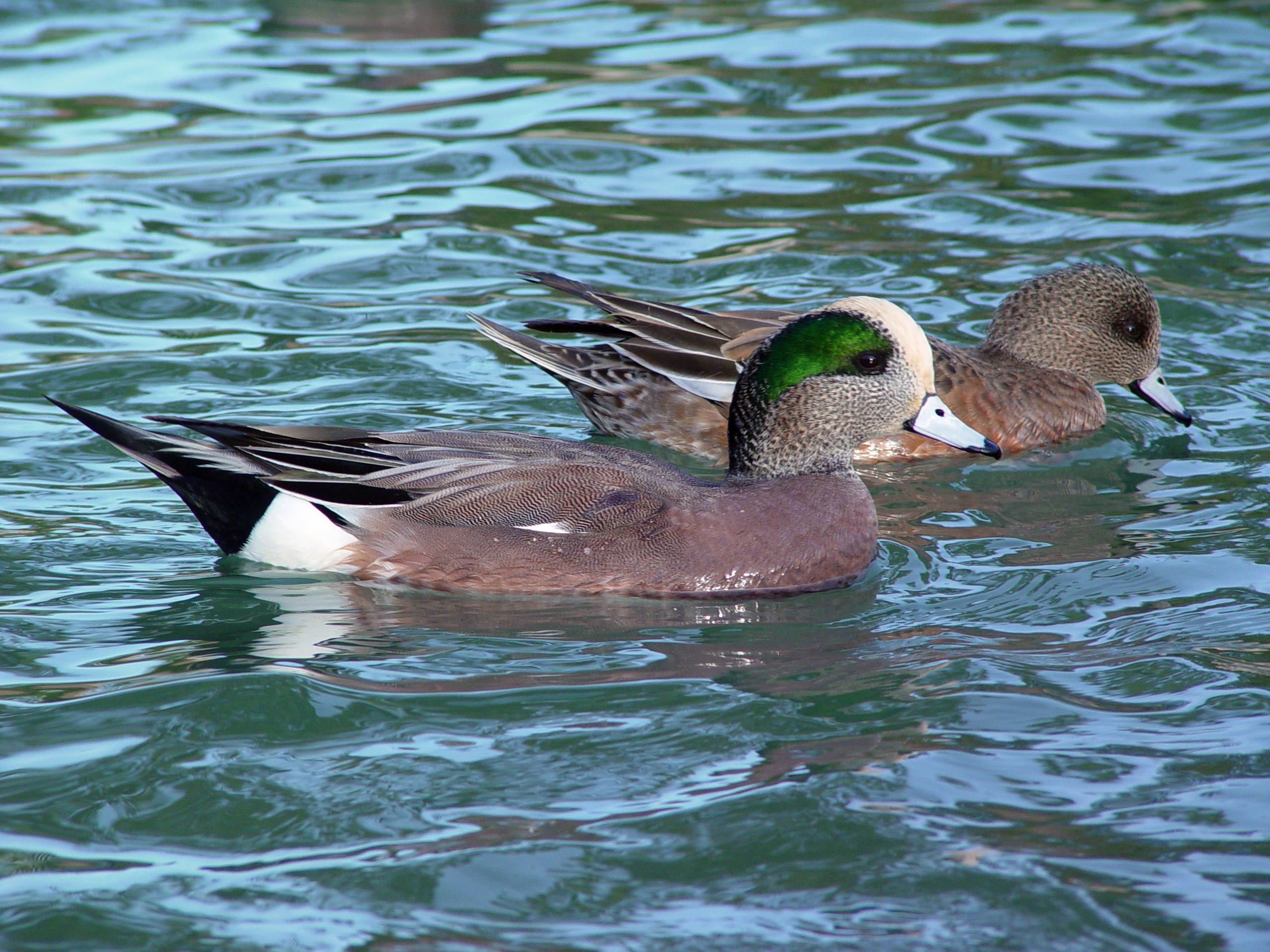Wigeon on:
[Wikipedia]
[Google]
[Amazon]
The wigeons or widgeons are a group of birds, dabbling ducks currently classified in the genus ''

 There are three extant species: the
There are three extant species: the
here
an
Mareca Ducks Wigeons Bird common names {{duck-stub
Mareca
''Mareca'' is a genus or subgenus of ducks in the family Anatidae that includes the wigeons.
The species now placed in this genus were formerly placed in the genus ''Anas''. A molecular phylogentic study comparing mitochondrial DNA sequences pub ...
'' along with two other species. There are three extant species of wigeon, in addition to one recently extinct species.
Biology
 There are three extant species: the
There are three extant species: the Eurasian wigeon
The Eurasian wigeon or European wigeon (''Mareca penelope''), also known as the widgeon or the wigeon, is one of three species of wigeon in the dabbling duck genus ''Mareca''. It is common and widespread within its Palearctic range.
Taxonomy
Th ...
(''Mareca penelope''), the American wigeon
The American wigeon (''Mareca americana''), also known as the baldpate, is a species of dabbling duck found in North America. Formerly assigned to ''Anas'', this species is classified with the other wigeons in the dabbling duck genus '' Mareca'' ...
(''M. americana'') and the Chiloé wigeon
The Chiloé wigeon (''Mareca sibilatrix''), also known as the southern wigeon, is one of three extant species of wigeon in the genus ''Mareca'' of the dabbling duck subfamily. This bird is indigenous to the southern part of South America, inclu ...
(''M. sibilatrix''). A fourth species, the Amsterdam wigeon (''Mareca marecula''), became extinct in the 19th century. The wigeons' closest relatives, forming with them the genus ''Mareca'', are the gadwall and the falcated duck
The falcated duck or falcated teal (''Mareca falcata'') is a gadwall-sized dabbling duck from the east Palearctic (East Siberia and Mongolia to North Japan; wintering to India).
Taxonomy
The closest relative of this species is the gadwall, follo ...
.
All three wigeons are similarly shaped, with a steep forehead and bulbous rear to the head. Males have a distinctive breeding plumage, in their eclipse plumage they resemble females, which are similar in appearance year-round. All three wigeon species hybridise in captivity while American and Eurasian wigeons hybridise in the wild.Carey, Geoff J. (1993). Hybrid male wigeon in East Asia ''Hong Kong Bird Report 1992'' 160-6 An American wigeon × mallard hybrid has also been recorded.
The American wigeon was formerly called the ''baldpate'' by ornithologists, and some people still use that name, especially hunters.
The diet of the wigeon consists mainly of grass leaves (~80%), other food types eaten are seeds (~10%) and roots and stems (~5%).
References
Further reading
* * * * * * * * * * *External links
Photographs of hybrid wigeons can be seehere
an
Mareca Ducks Wigeons Bird common names {{duck-stub